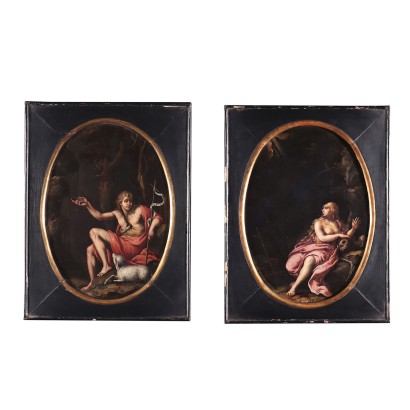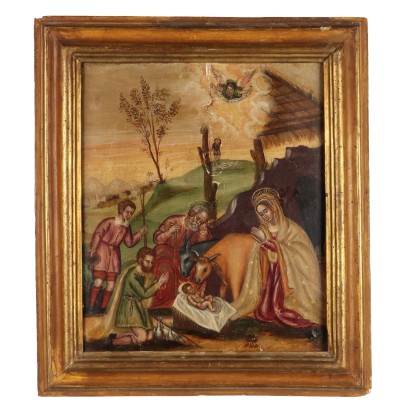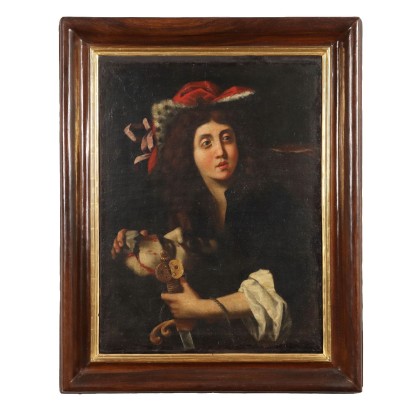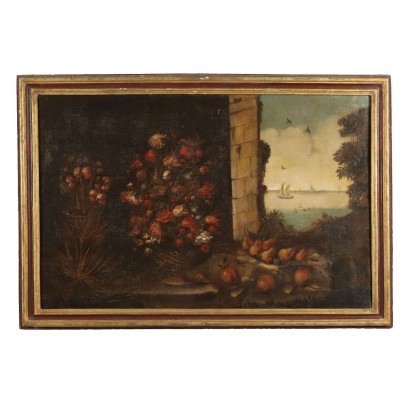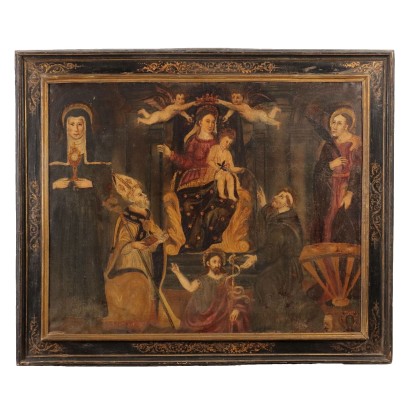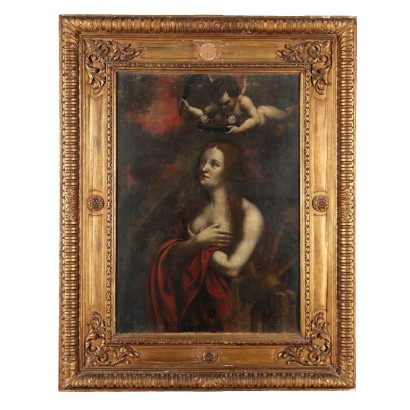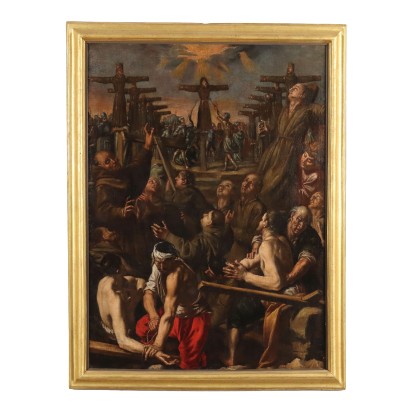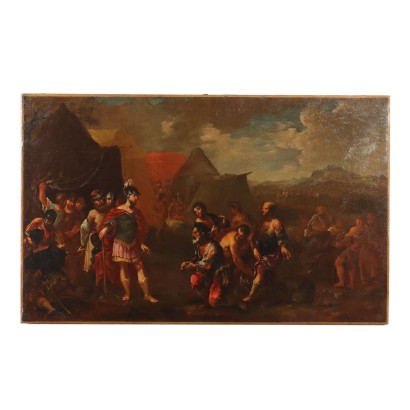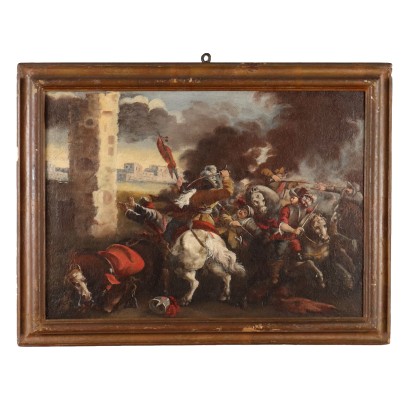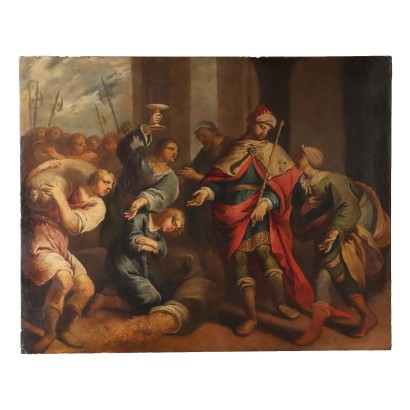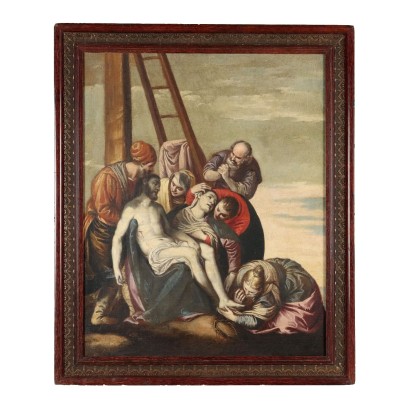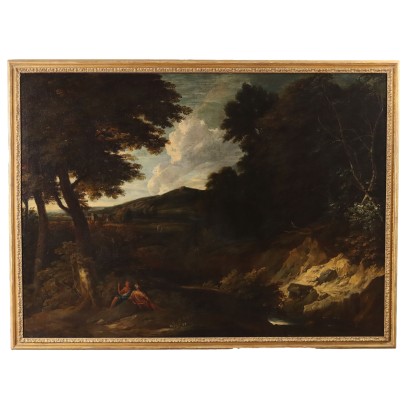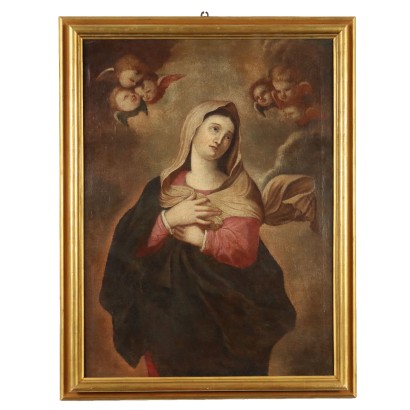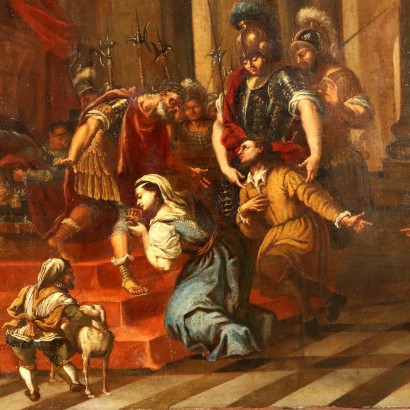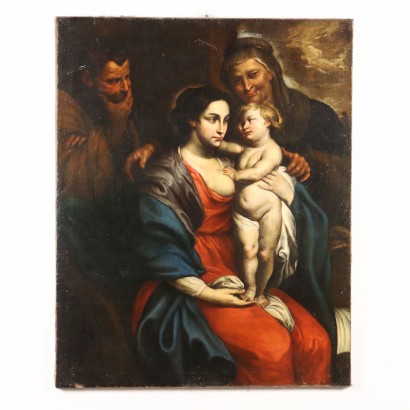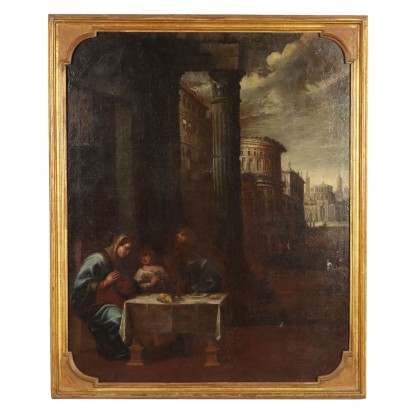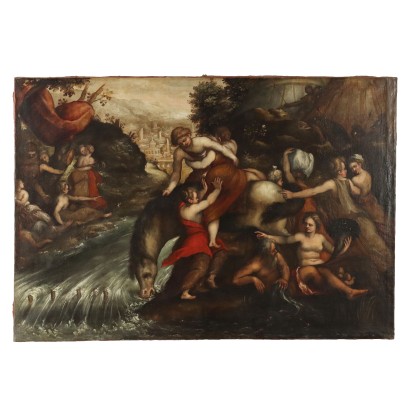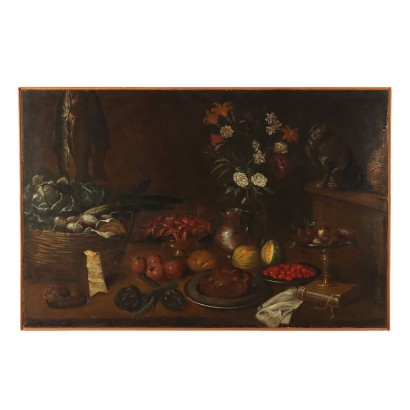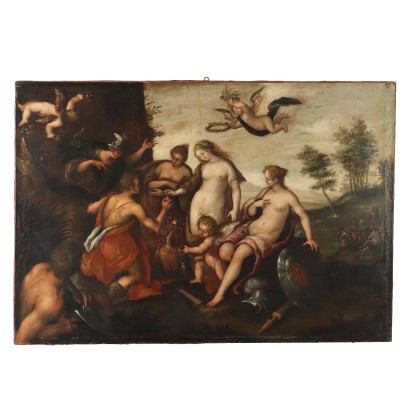ARARPI0233382
Pair of Antique Paintings on Slate Religious Subject XVII Century
The Penitent Magdalene and St. John the Baptist
Oil on slate. Two examples of oil painting on stone are proposed here, a pictorial genre that was particularly popular in the Venetian Republic between the 16th and 17th centuries, in its form of oil painting on blackboard or touchstone. The choice of such a dark stone as a background is not only linked to practical reasons (the proximity of the mines of Brescia and Val Brembana), but, as our two works clearly demonstrate, the emergence of the figures from the dark background responds to the light also full to the new needs of the painting of the time, which in the climate of the Counter-Reformation, tended to express not only the idealized existential certainties of the full Renaissance, but also the anxieties and the opening up to new phases, already tending with Tintoretto towards greater attention to reality and luministic contrasts, to then flow overwhelmingly into seventeenth-century research strongly focused on the contrasting combination of light and shadow. The two works presented here, well within the production of the Venetian area of the first decades of the 17th century, propose two figures of saints, both hermits, placed on a dark, barely visible naturalistic background. The figure of Magdalene emerges from the darkness, leaning to follow the curve of the stone support; she is depicted looking questioningly towards the darkness, as if in a listening attitude, her left hand raised and the other resting on the remarkably shortened "memento mori". In front of her a scourge and the jar of ointment. Painted en pendant, Saint John the Baptist is represented as a young man, with a lamb at his feet, in his hand the processional cross with the banner "ecce agnus dei", while with his right hand he draws from the water source, recalling the episode that will see Jesus Christ baptized. In both paintings the figures stand out in a strong and incisive way thanks to the black that characterizes the slate plaque on which they are depicted. The two paintings, in an oval format, are presented in black wooden frames, from the late 19th century.

